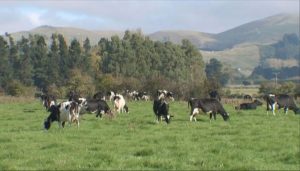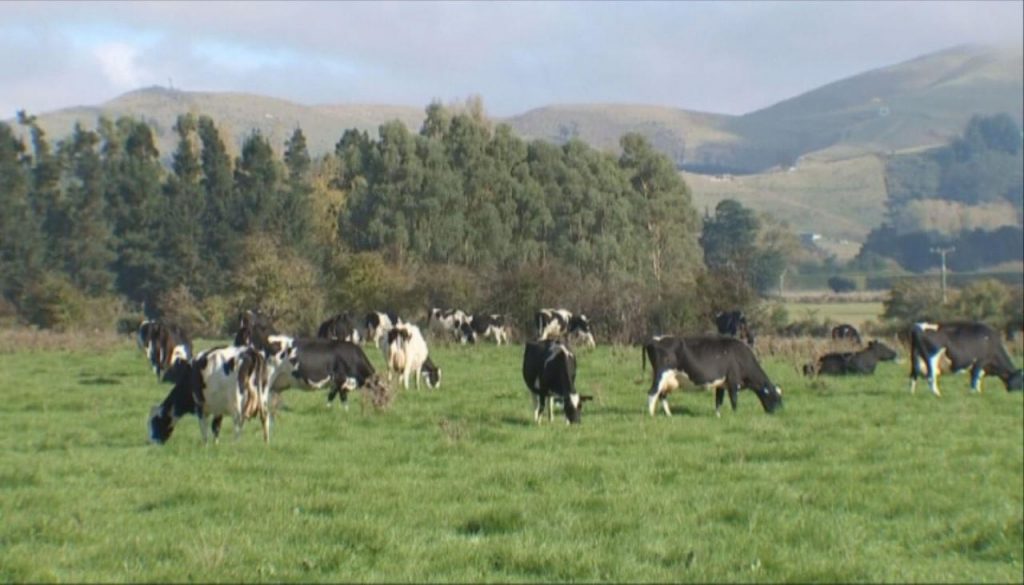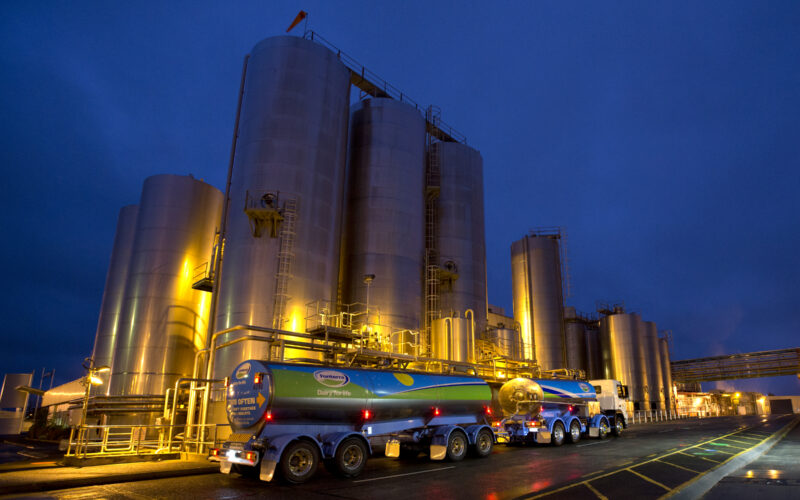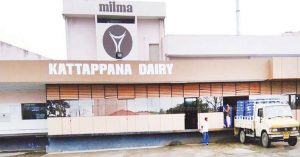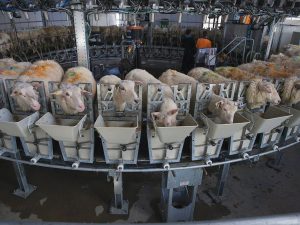Happy June Dairy Month, consumers. Know, however, that it is not a happy month for dairy farmers.
The Agriculture Department announced the May Federal order Class III benchmark milk price at $16.11 per hundredweight, down $2.41 from April, $9.10 below May 2022, and the lowest Class III price since August 2021.
The five-month Class III average stands at $17.99, down from $22.67 at this time a year ago, but compares to $16.94 in 2021. Bottom line is, very few, if any, dairy farmers can make milk at current prices.
Monday’s Class III futures settlements portend a June price at $15.19; July, $15.97; and August at $16.87, with a peak at only $18.55 in November.
The May Class IV milk price is $18.10, up 15 cents from April, but $6.89 below a year ago. Its five-month average is at $18.66, down from $24.44 a year ago and compares to $14.54 in 2021.
Meanwhile, the USDA’s Agricultural Marketing Service issued an invitation last week for additional proposals and issued an action plan on proposed amendments to pricing provisions of Federal Milk Market Orders.
Feed ratio sliding
Corn and alfalfa hay prices climbed higher in April, according to the latest Ag Prices report, and the All Milk price dropped some more. The milk feed ratio fell to 1.48, down from 1.56 in February, lowest since July 2012’s 1.33, and compares to 1.95 in April 2022. The all-time low was 1.02 in August 1974.
The All Milk Price average fell for the sixth consecutive month, falling to $20.70 per hundredweight, down 40 cents from March, and $6.30 below April 2022.
The national corn price averaged $6.70 per bushel, up 3 cents from March, after dropping 13 cents the month before, but is 37 cents per bushel below April 2022.
Soybeans were unchanged from March, at $14.90 per bushel, after dropping 20 cents the previous month, but are 90 cents per bushel above a year ago.
Alfalfa hay soared to an average $287.00 per ton, up $20 per ton from March and $30 per ton above a year ago.
The April cull price for beef and dairy combined continued climbing, averaging $99.30 per cwt., up $3.60 from March, after gaining $6.20 the month before, is $11.20 above April 2022, and $27.70 above the 2011 base average.
Income over feed costs in April were below the $8 per cwt. level needed for steady to increasing milk production for the third month in a row, according to dairy economist Bill Brooks, of Stoneheart Consulting in Dearborn, Missouri.
“Input prices were mixed when compared to all-time record high prices in April,” he said, “but all three commodities were in the top three for April all time. Feed costs were the highest ever for the month of April and the fourth highest all time.
“For 2023, milk income over feed costs (using May 31 CME settling futures prices for Class III milk, corn, and soybeans plus the Stoneheart forecast for alfalfa hay) are expected to be $7.60 per cwt., a loss of 43 cents per cwt. versus last month’s estimate. 2023 income over feed would be below the level needed to maintain or grow milk production, and down $4.39 per cwt. from 2022’s level.”
Low CME prices
Block Cheddar, after five successive declines, fell to $1.42 per pound last Wednesday, lowest CME price since May 11, 2020 when it traded at $1.3875. It regained 7.25 cents last Thursday but gave some back Friday to close the Memorial Day holiday shortened week at $1.43, down 4.75 cents, and 84 cents below a year ago.
The barrels closed Friday at $1.5125, up 2.25 cents on the week, 73.25 cents below a year ago, and an inverted 8.25 cents atop the blocks.
Sales at the market of last resort totaled 25 loads of block for the week and 122 for the month of May, highest monthly total in two years, and up from 76 lots in April. Barrel sales totaled 35 for the week and 184 for the month, down from 212 in April.
Two trades Monday took the blocks to $1.4450 per pound, then fell back with the final sale at Friday’s close. Buoyed by Tuesday GDT, the blocks gained 3 cents and hit $1.46.
The barrels jumped 3.75 cents Monday and added 1.75 cents Tuesday, climbing to $1.5675, 10.75 cents above the blocks.
To give a little “perspective,” a load of cheese is approximately 40,000 pounds. If you add May’s CME block and barrel sales, you get 306 loads of cheese or about 12.2 million pounds. That does not include privately traded cheese. Keep in mind, it takes 10 pounds of milk to produce one pound of cheese. A gallon of milk weighs 8.6 pounds.
Midwest cheesemakers are running full schedules, according to Dairy Market News. Cheese demand is mixed but more processors are reporting upticks. Milk availability is “readily accessible,” and plants are turning spot milk offers away as they are already full. Mid-week spot milk prices ranged $11 to $4 under Class III, compared to $2.75 under to Class a year ago.
Retail and food service cheese demand is steady to lower in the West as some reports of decreased sales activity surfaced. Export demand is steadier from Mexico and South America, compared to softer Asian demand, says DMN.
CME butter climbed to $2.4650 per pound last Thursday, highest since Dec. 22, 2022, but closed Friday at $2.4450, up 1.50 cents on the week, while 47 cents below a year ago. Sales totaled 6 cars for the week and 29 for May, down from 38 in April. A carload of butter is also about 40,000 pounds.
The butter dropped 4.25 cents Monday on 5 trades and lost 2.50 cents Tuesday on 5 more trades, dropping to $2.3775, lowest since May 1.
Some butter plants churned cream through the weekend while others scheduled downtime. Contacts say as Class II processing ticks up, along with temperatures, cream accessibility is not expected to remain as widely available as it is now. Butter demand is steady, but seasonal upticks are expected soon, says DMN.
Cream is widely available in the West and cream multiples were largely unchanged last week. Aside from interest among purchasers supplying butter to Canada, export activity is on the quieter end, says DMN.
Grade A nonfat dry milk fell to $1.1550 last Wednesday, then rallied Thursday and closed Friday at $1.17, unchanged on the week but 69.25 cents below a year ago; 6 loads were sold on the week and 45 for the month, up from 18 in April.
Monday’s powder was down 0.75 cents, with 5 loads exchanging hands, but gained back 0.25 cents Tuesday, closing at $1.16.50, with 6 more loads exchanging hands.
Dry whey fell to 25.75 cents per pound last Thursday and stayed there Friday, down 1.75 cents on the week and 3 cents below a year ago. Sales amounted to 37 loads on the week and a record 218 for the month of May, up from 142 in April.
The whey was bid up 0.75 cents Monday and added a penny Tuesday, hitting 27.50 cents per pound.
Churns busy
The April Dairy Products report shows cheese production totaled 1.171 billion pounds, down 4.9% from March and 0.2% below April 2022, the second month in 2023 with a year over year drop. Output for the four-month period is at 4.7 billion pounds, up 0.7% from the same period a year ago.
Italian cheese output was down 6.7% from March and 2.6% below a year ago. American output was down 2.1% from March but up 2.3% from a year ago. Mozzarella was down 1.3% from a year ago.
Cheddar output slipped to 346.2 million pounds, down 2 million pounds or 0.6% from the March count which was revised up 2.5 million pounds, but was up 19 million pounds, or 5.8%, from April 2022. YTD Cheddar stood at 1.37 billion pounds, up 4.1% from 2022.
Butter output slipped to 195.0 million pounds, down 10 million pounds or 4.9% from March but was up 13.7 million pounds or 7.6% from a year ago. YTD butter output stood at 788.5 million pounds, up 3.3% from a year ago.
Yogurt production was up 3.1% from a year ago and hard ice cream output was down 6.1%.
Dry whey production totaled 80.8 million pounds, up 3.3 million pounds or 4.2% from March and up 1.4 pounds or 1.7% above year ago.
Stocks grew to 79.5 million pounds, up 11.7 million pounds or 17.3% from March and 7 million or 9.7% above a year ago.
Nonfat dry milk output inched up to 199.6 million pounds, up 200,000 pounds or 0.1% from March and up 3.8 million or 1.9% above a year ago.
Stocks slipped to 309.2 million pounds, down 3.4 million pounds, or 1.1% from March, but were up 10.1 million pounds or 3.4% from a year ago.
Skim milk powder production totaled 34.5 million pounds, down 800,000 pounds or 2.1% from March, and 10.1 million pounds or 22.6% below a year ago.
GDT slips 0.9% again
Whole milk powder provided the biggest downward pull in Tuesday’s Global Dairy Trade auction. The weighted average was down 0.9%, following the 0.9% decline on May 16.
The 332nd event saw just under 51 million pounds of product sold, up from 47.5 million pounds on May 16. The average metric ton price slipped to $3,399 U.S., down from $3,488.00 on May 16.
Whole milk powder was down 3.0%, after it inched up 0.3% in the last event. Buttermilk powder was down 2.4%, while skim milk powder was unchanged. GDT Cheddar jumped 7.4%, after dropping 3.4% May 16. Anhydrous milkfat was up 1.8%, after dropping 4.5%, and butter inched 0.5% higher, following a 2.2% rise.
HighGround Dairy says the whole milk powder price equates to $1.44 per pound U.S., skim milk powder, $1.25; anhydrous milkfat, $2.14; butter, $2.31; and GDT Cheddar at $2.12 per pound.


